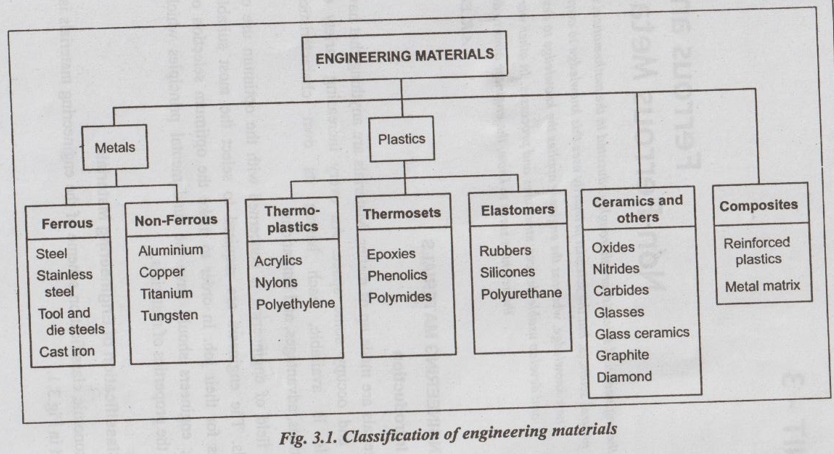Ferrous and Non-Ferrous Metals
"Both the engineer and scientist are thoroughly educated in the mathematical and natural sciences, but the scientist primarily uses this knowledge to acquire new knowledge, whereas the engineer applies the knowledge to design and develop usable devices, structures and processes. In other words, the scientist seeks to know, the engineer aims to do."
-A.R. Eide
ENGINEERING MATERIALS
1. Introduction
Materials are made up of matter. Materials are anything that have weight and occupy some space. An every increasing variety of materials is available, each having its own characteristics, applications, advantages, and limitations.
The field of engineering is concerned with the optimum use of materials. The engineers are required to select the most suitable materials for their job. In order to make the optimum selection of material, engineers should have the fundamental principles which controls the properties of materials.
2. Classification of Engineering Materials
A taxonomic classification scheme of the engineering materials is presented in Fig.3.1.

In this chapter, we shall discuss about the important ferrous and non-ferrous metals.
Note
The other engineering materials such as plastics, ceramics and composites will be studied in the next unit.
3. What are Metals?
✓ Metals are elemental substances.
✓ Metals are composed of elements which readily give up electrons to provide a metallic bond and electrical conductivity.
4. Characteristics of Metals
In general, metals possess the following characteristics :
(a) Hardness,
(b) Strength,
(c) Rigidity,
(d) Formability,
(e) Machinability,
(f) Weldability,
(g) Conductivity, and
(h) Dimensional stability.
5. Types of Metals
The metals may be grouped into the following two groups.
1. Ferrous metals:
✓ The metals, which contain iron as their main constituent, are called ferrous metals.
✓ Examples: Some of the widely used ferrous metals are pig iron, cast iron, wrought iron, and steel.
2. Non-ferrous metals:
✓ The metals, which contain a metal other than iron as their main constituent, are called non-ferrous metals.
✓ Examples: Some of the commonly used non-ferrous metals are aluminium, copper, zinc, lead, brass, and tin.
Now let us discuss the ferrous and non-ferrous metals in the following sections.
No comments:
Post a Comment